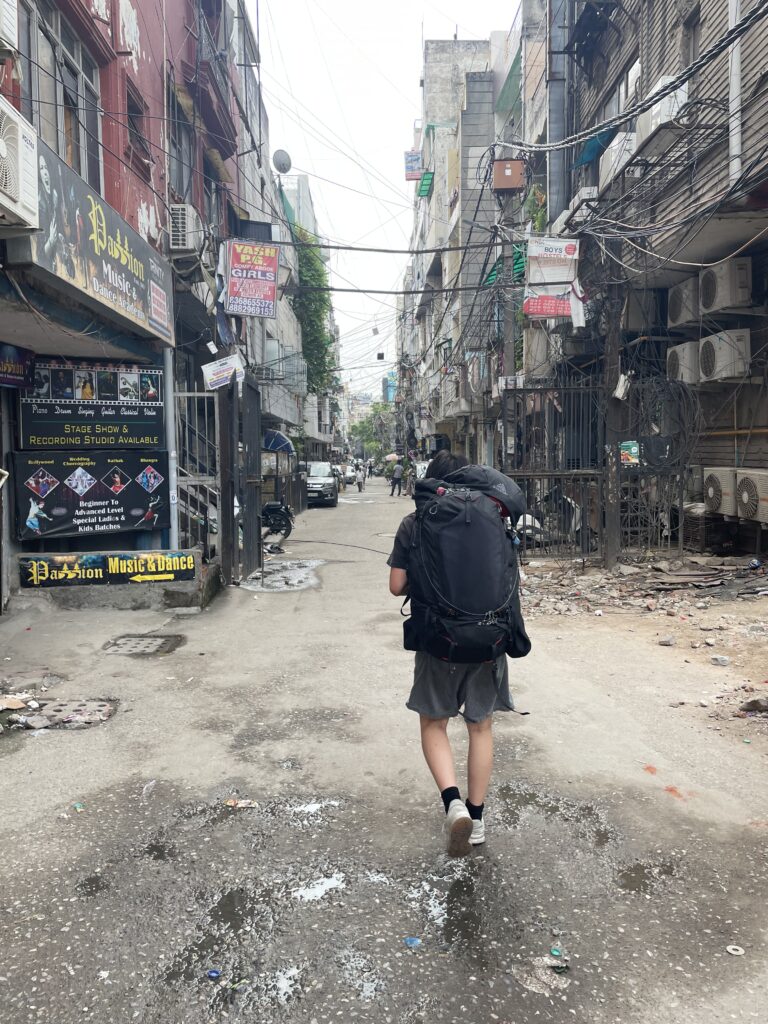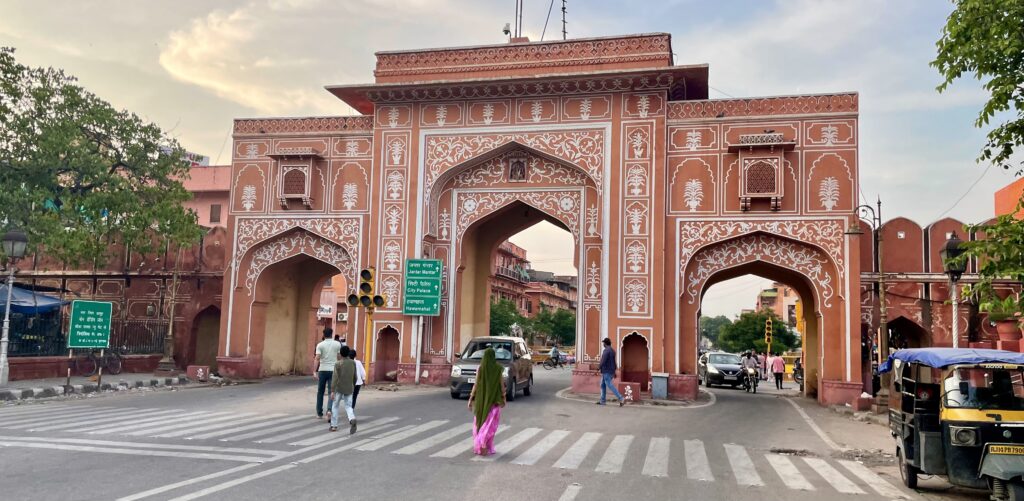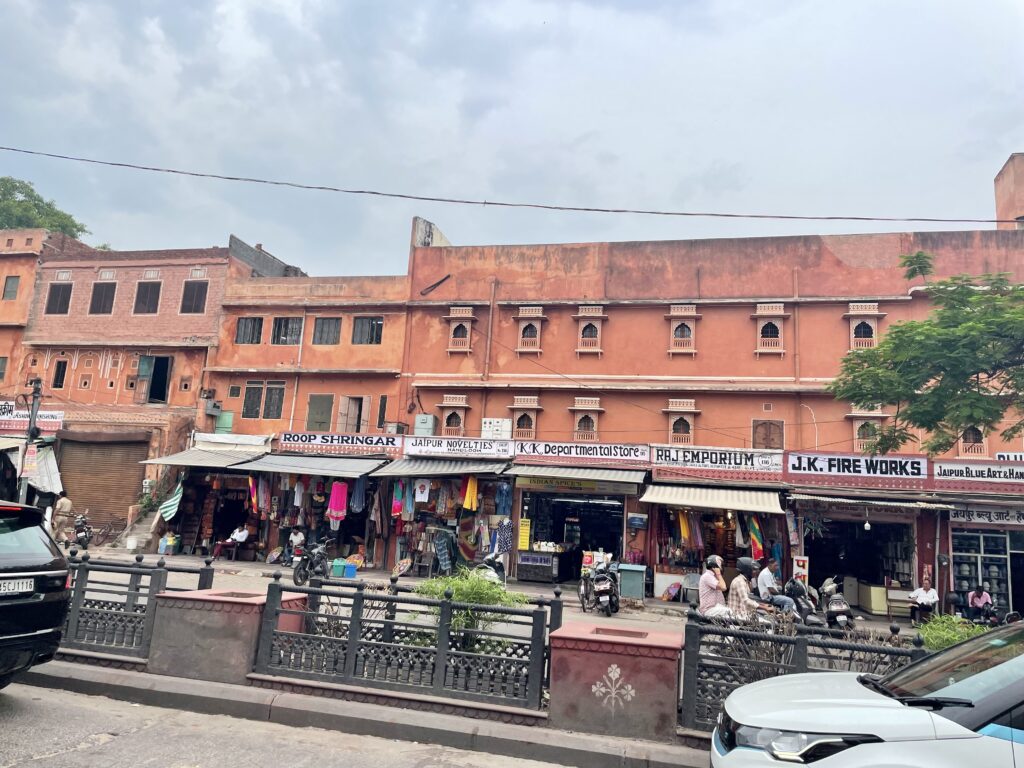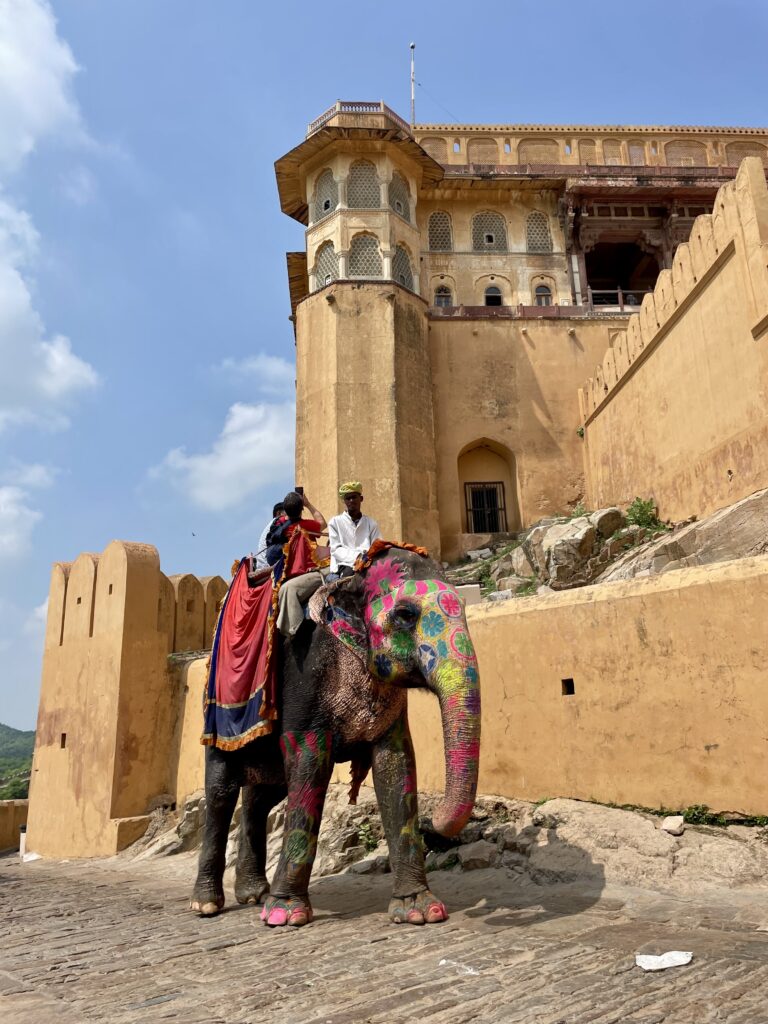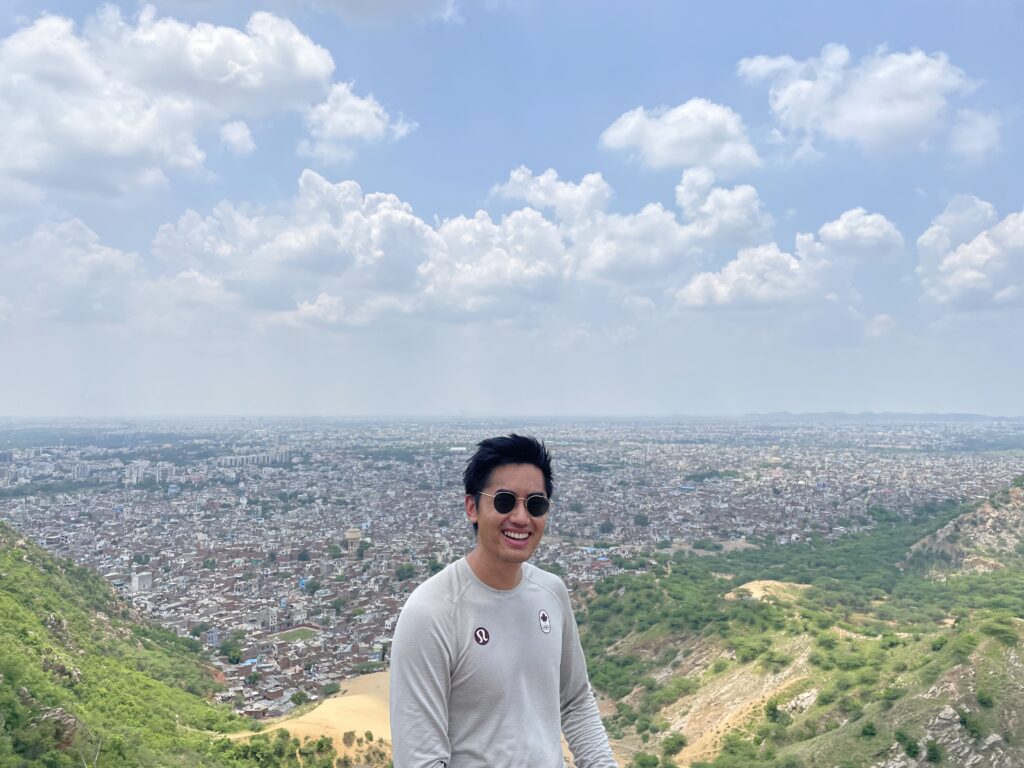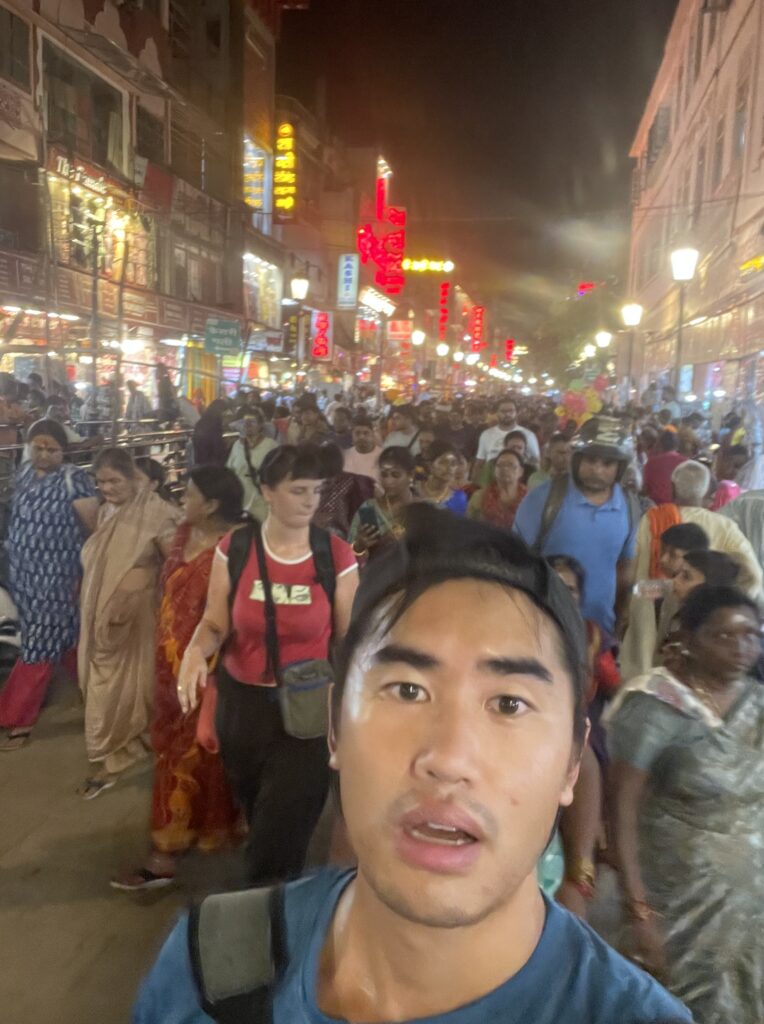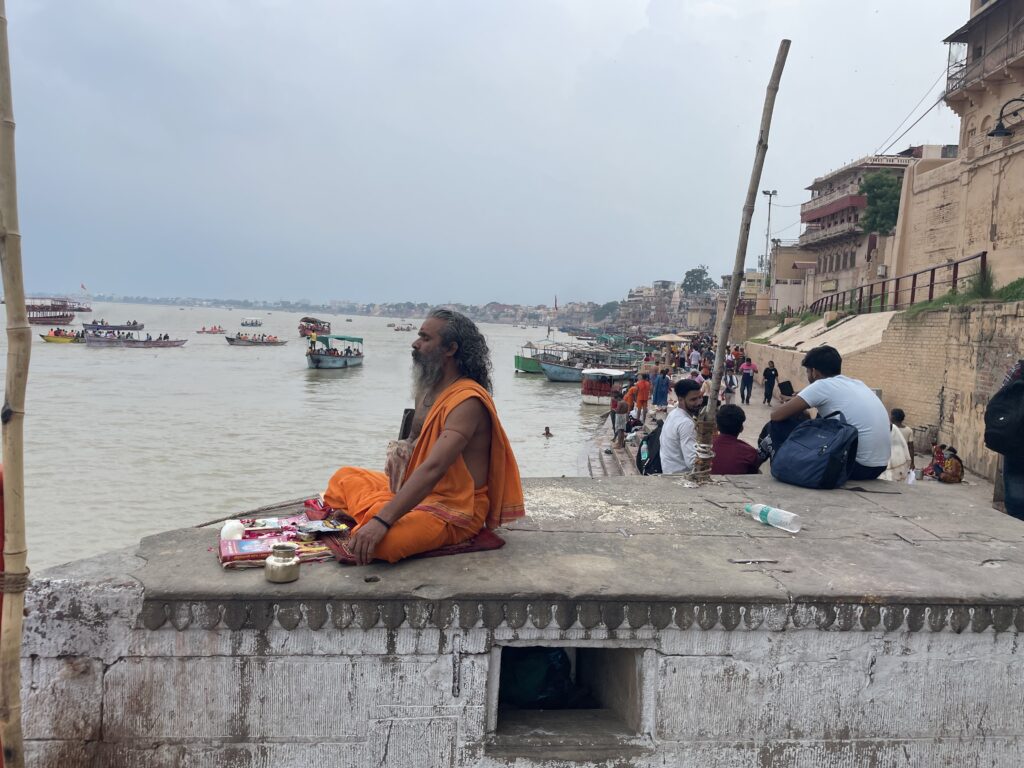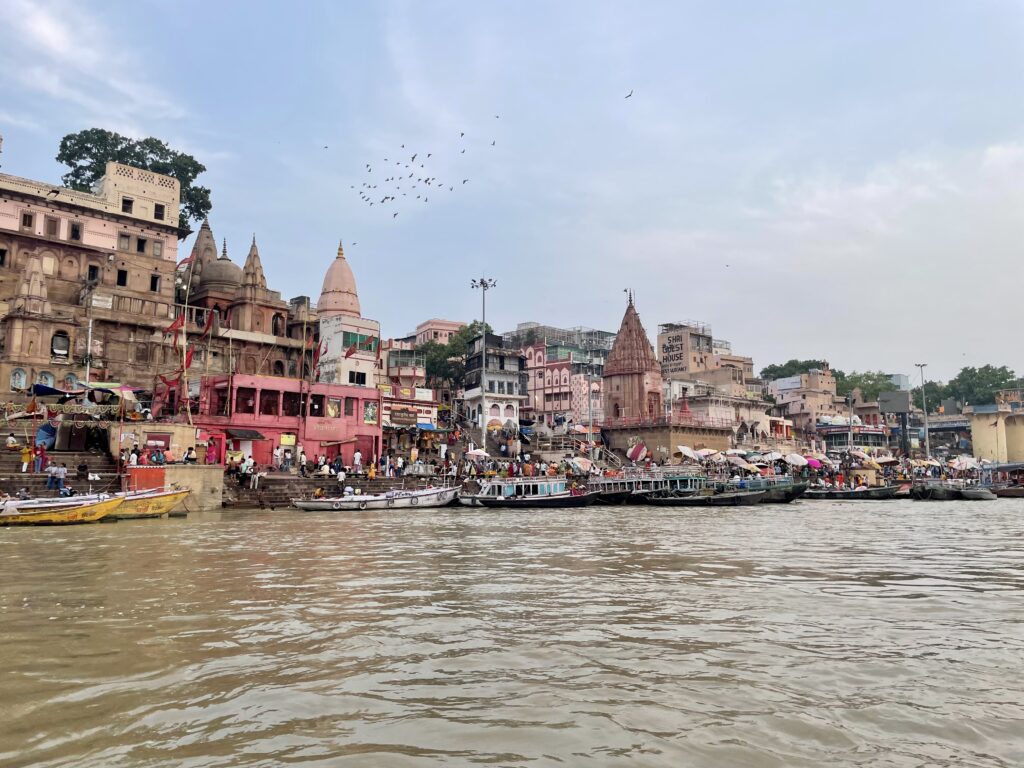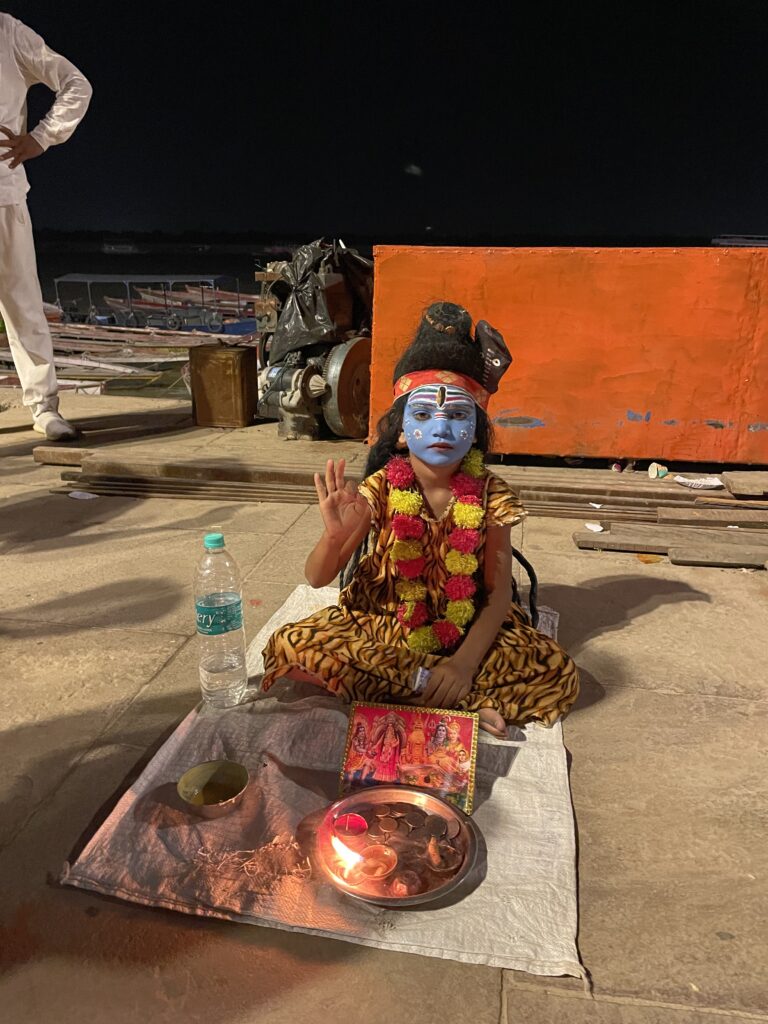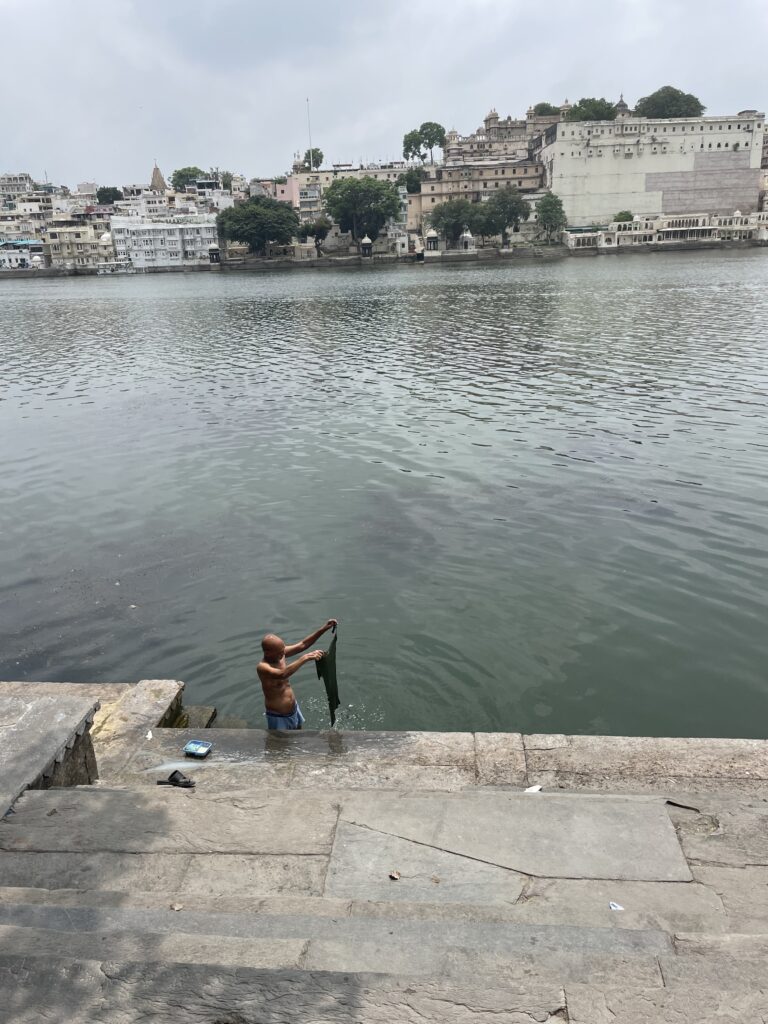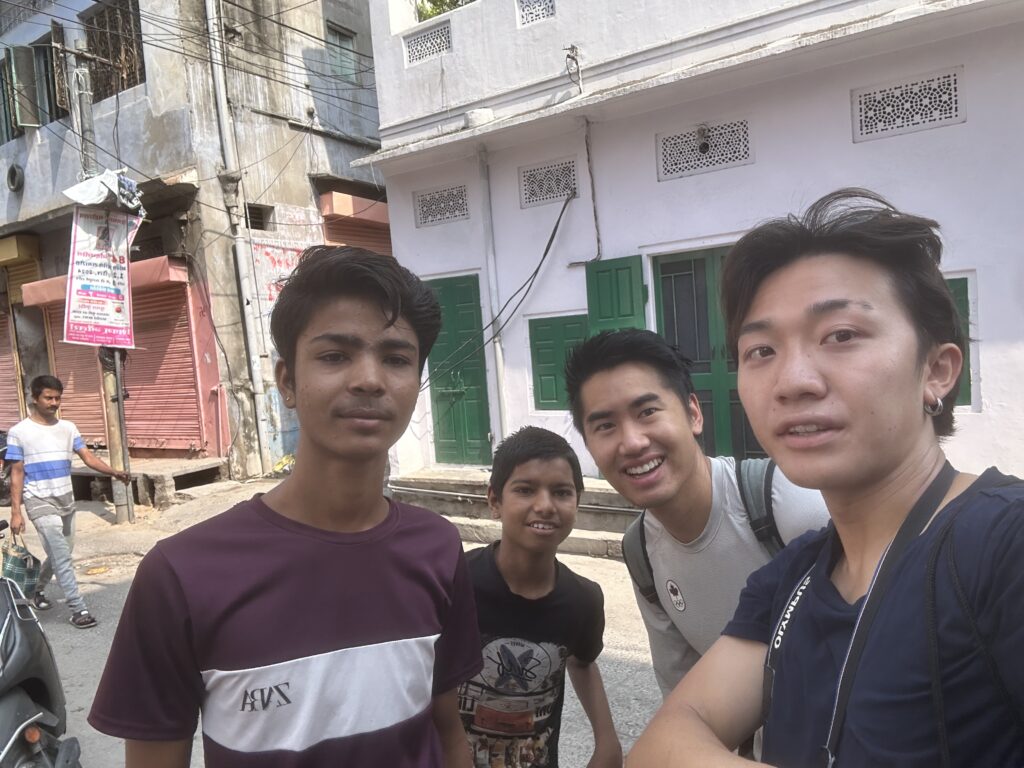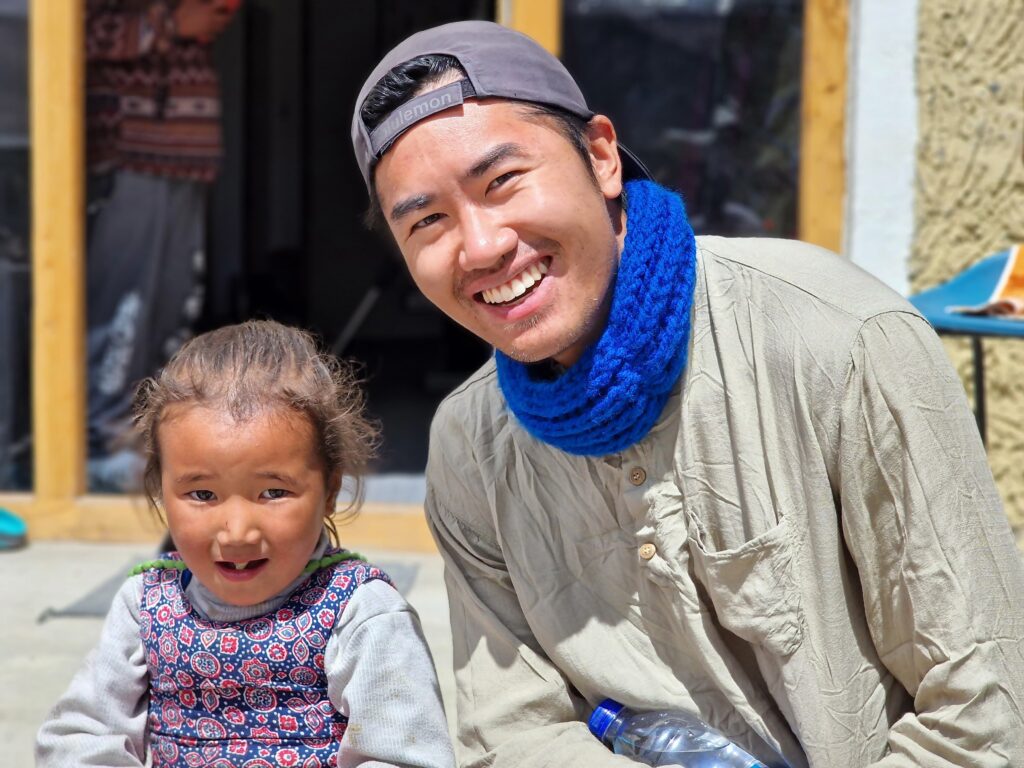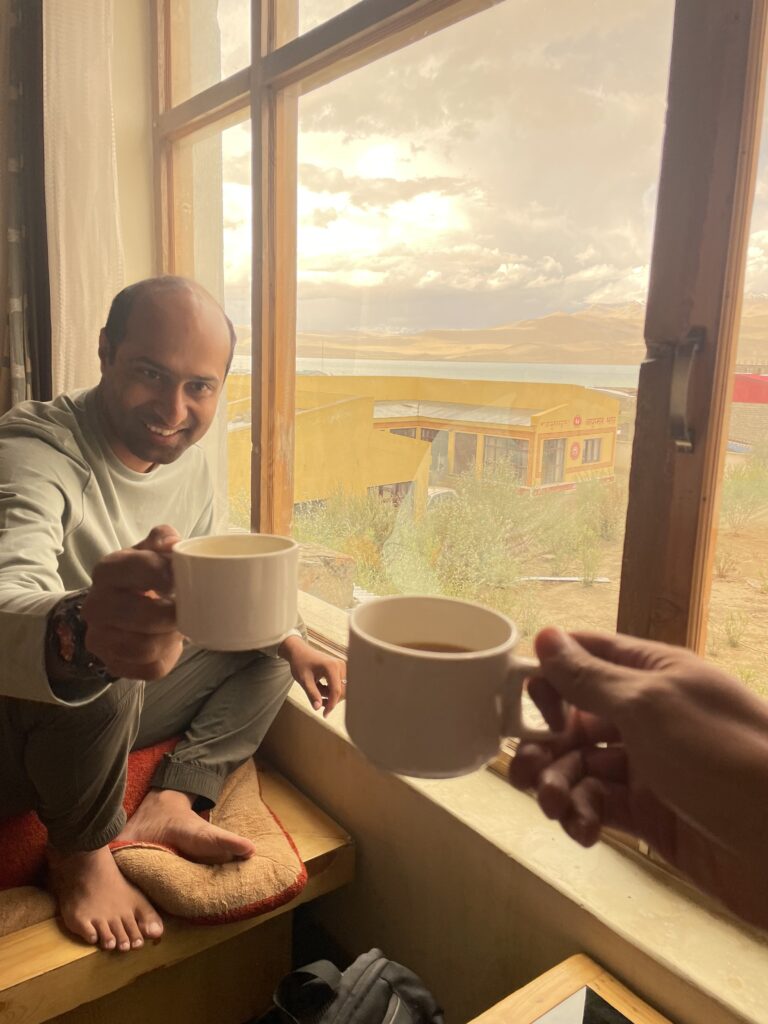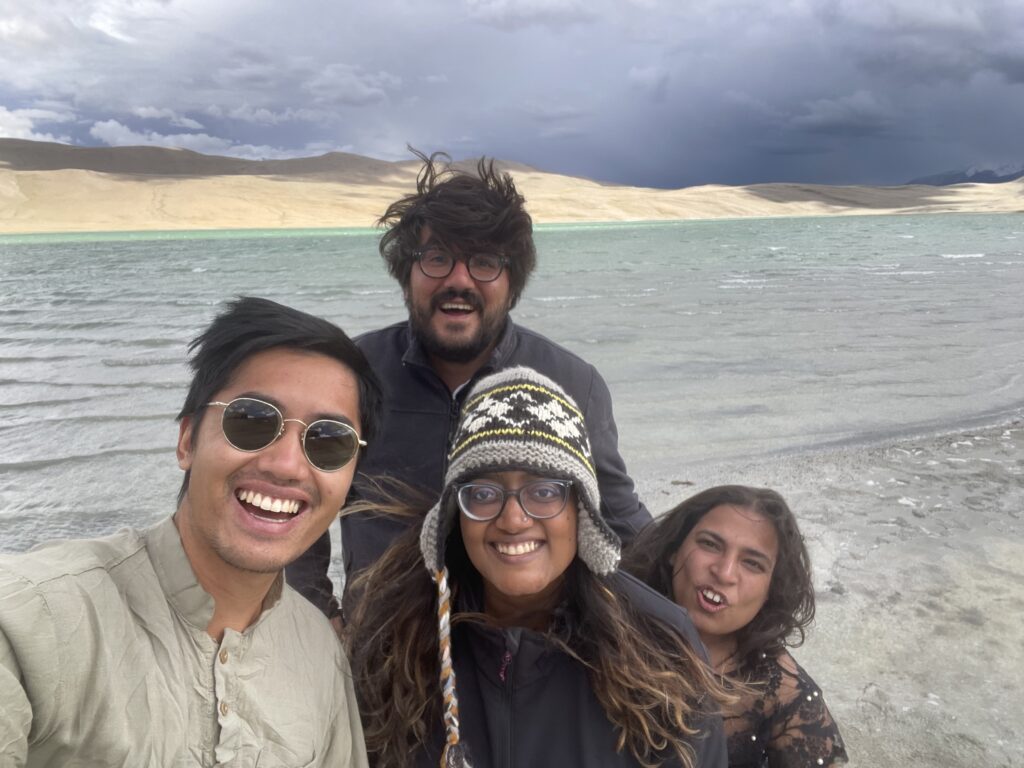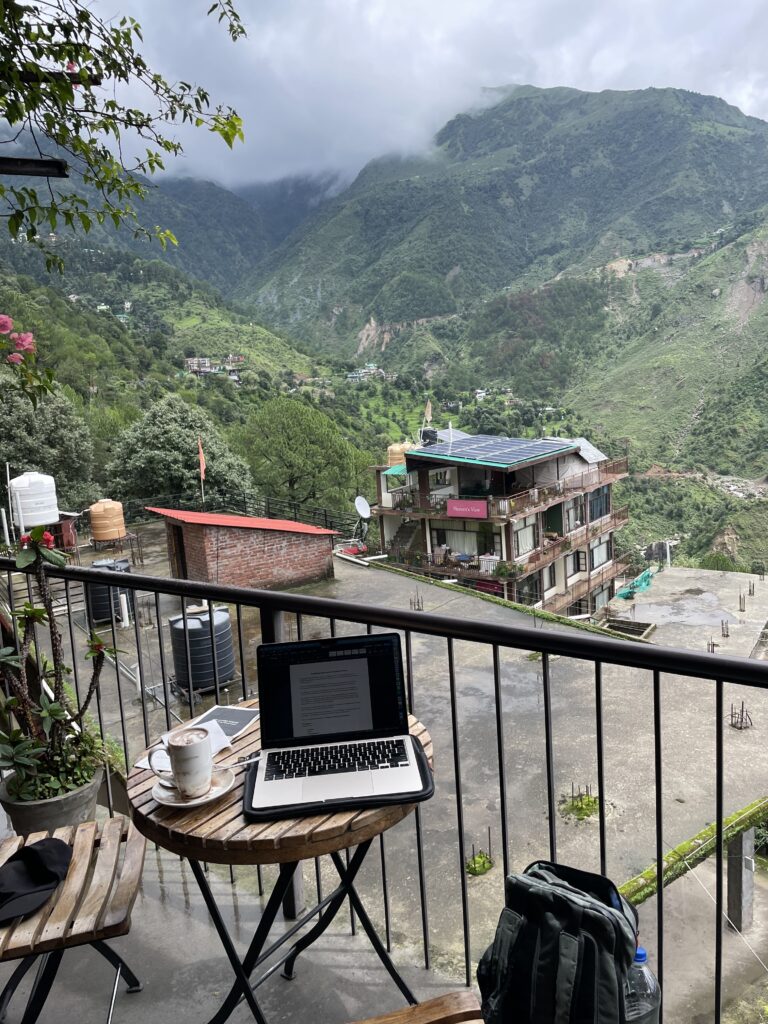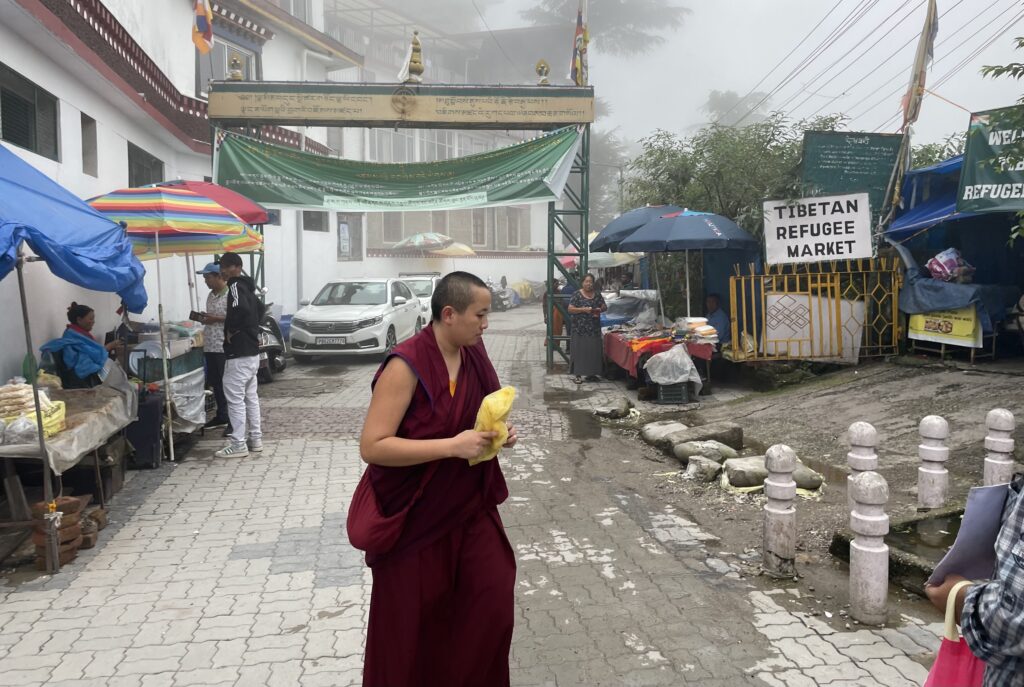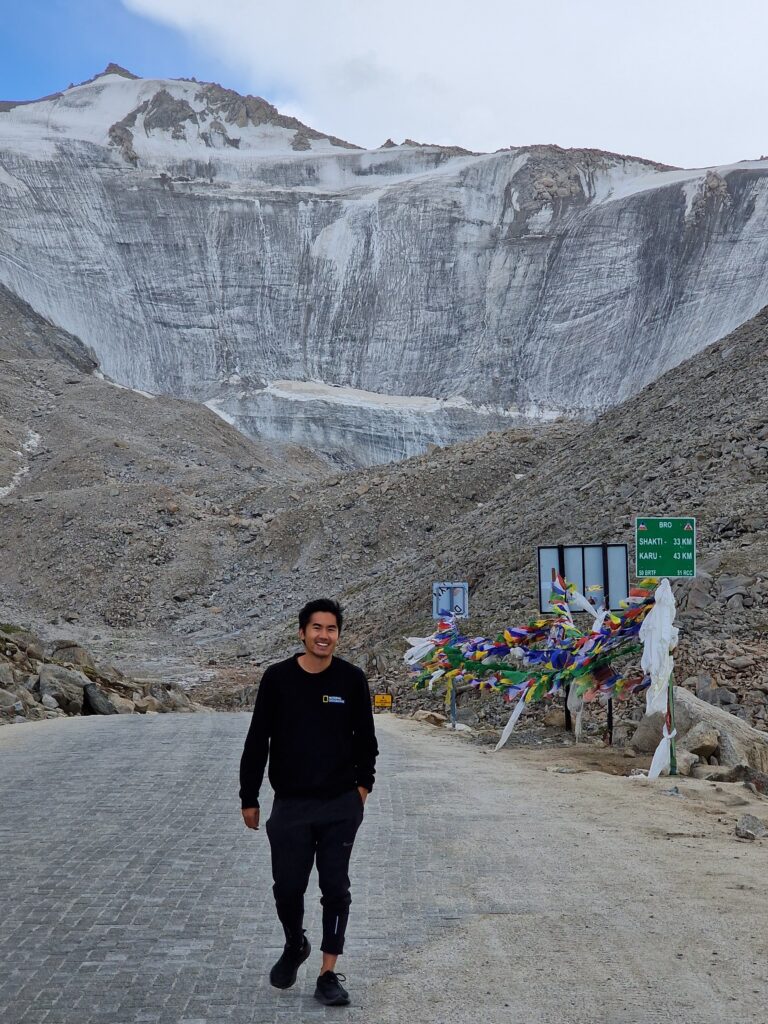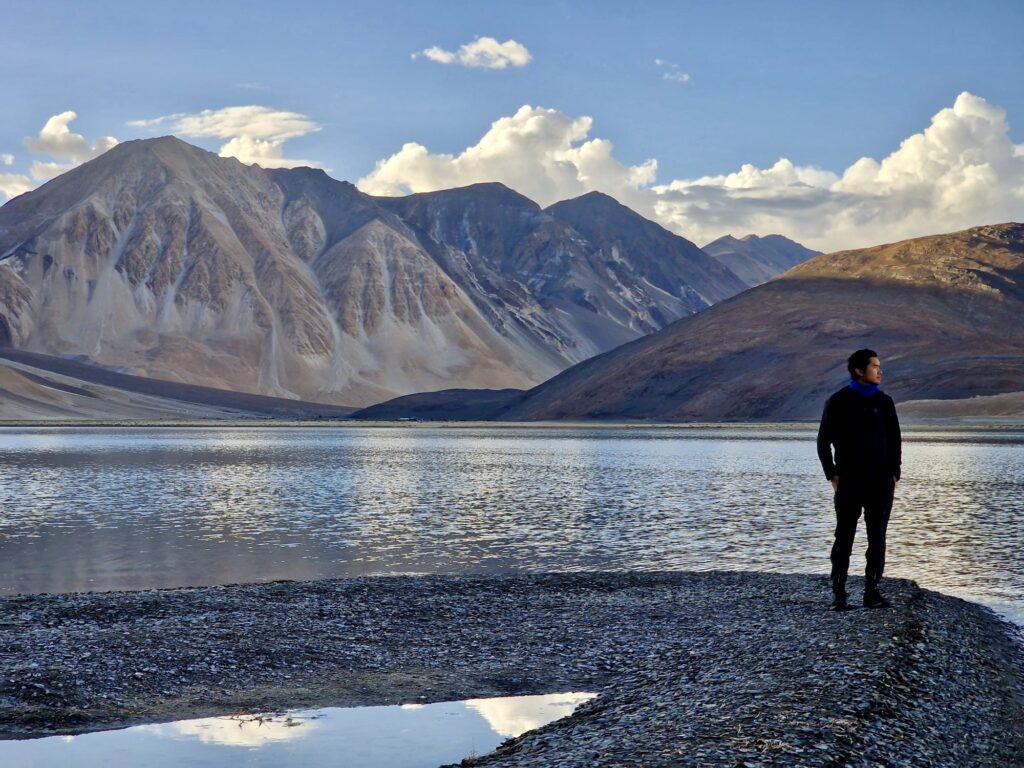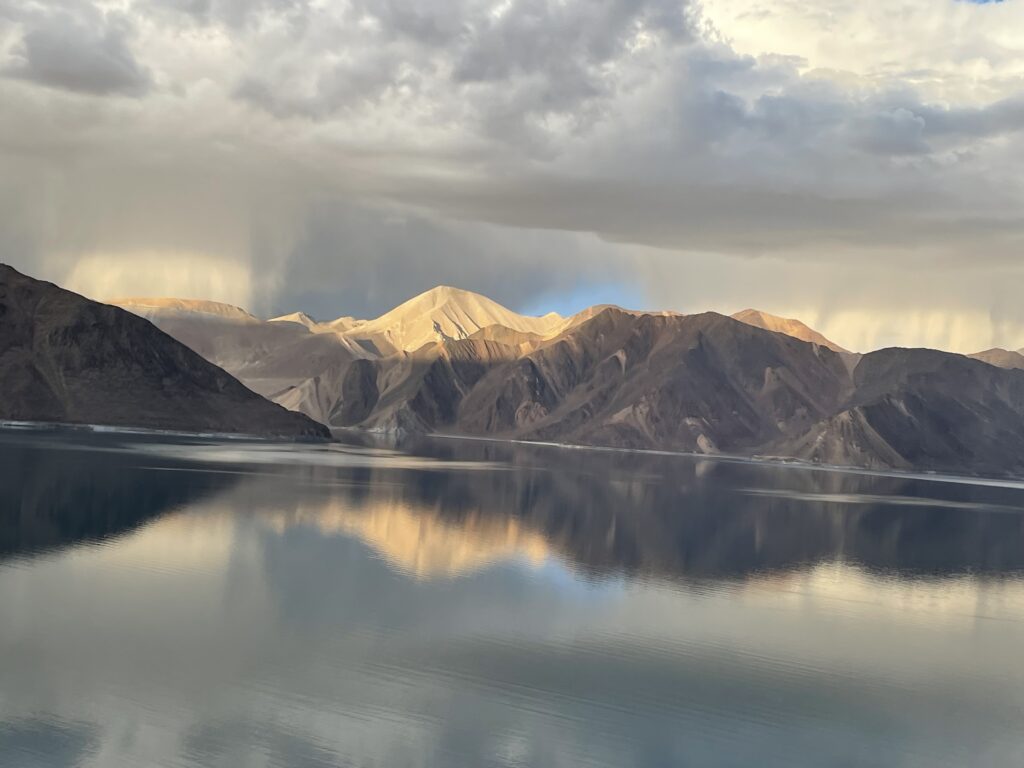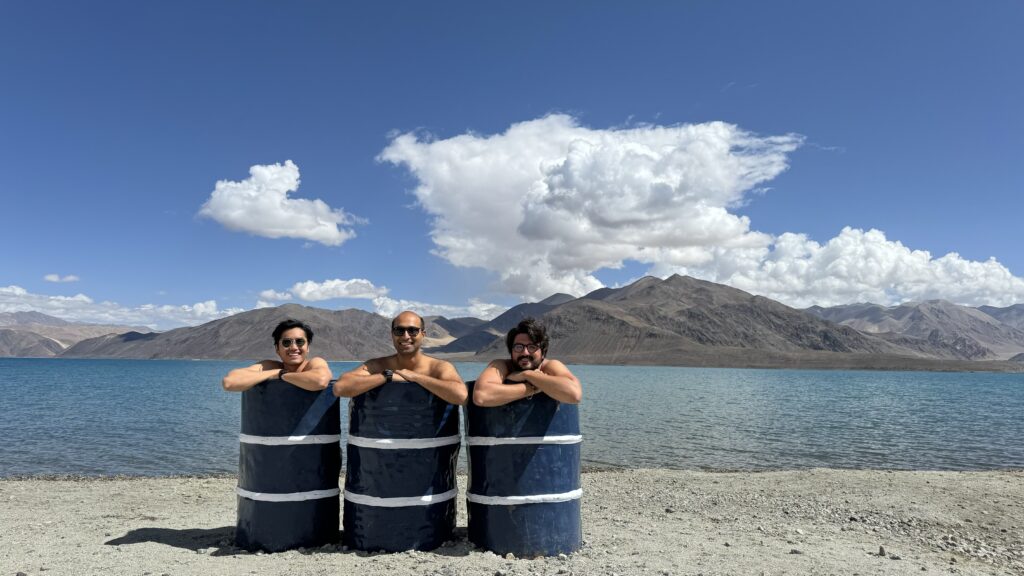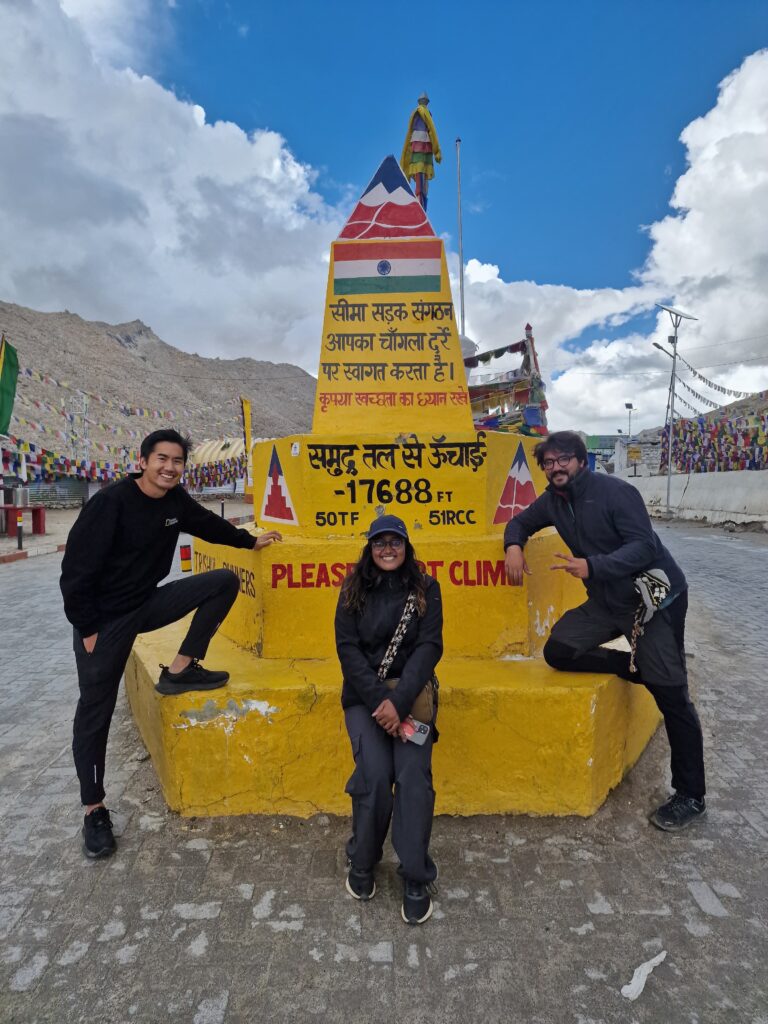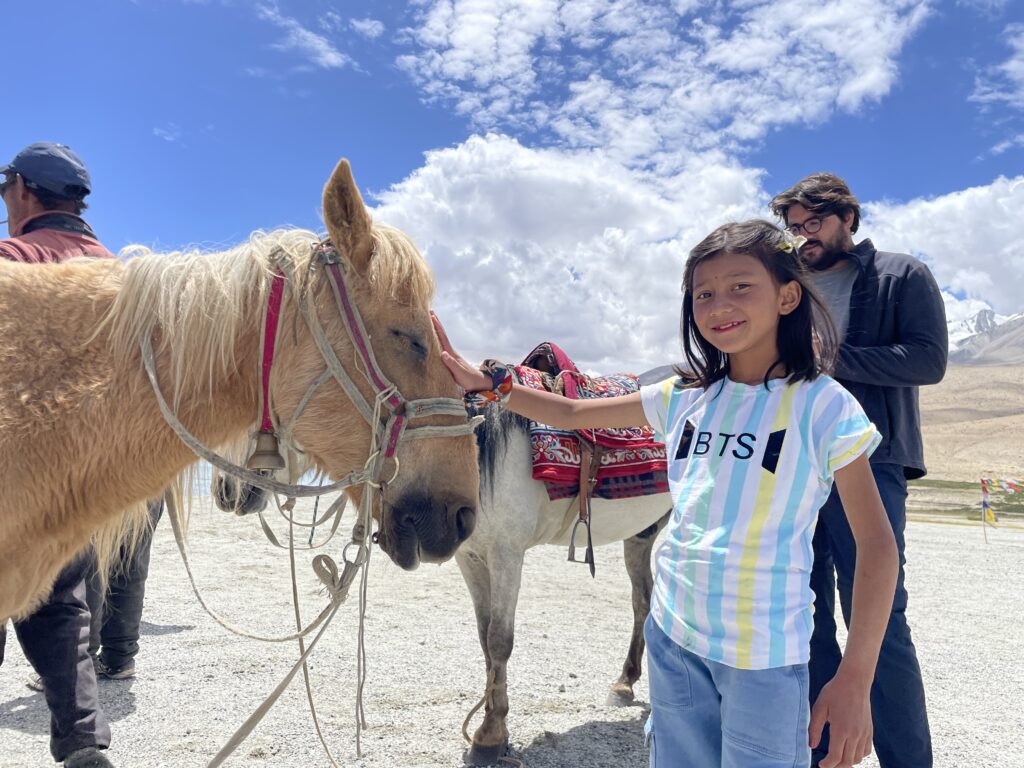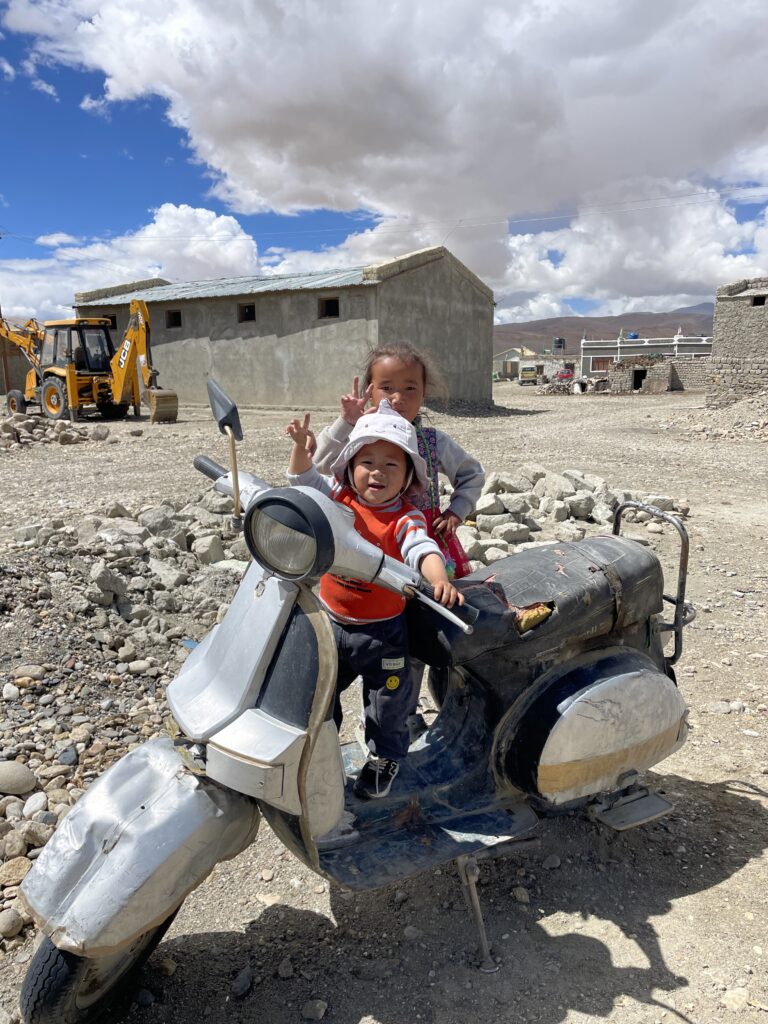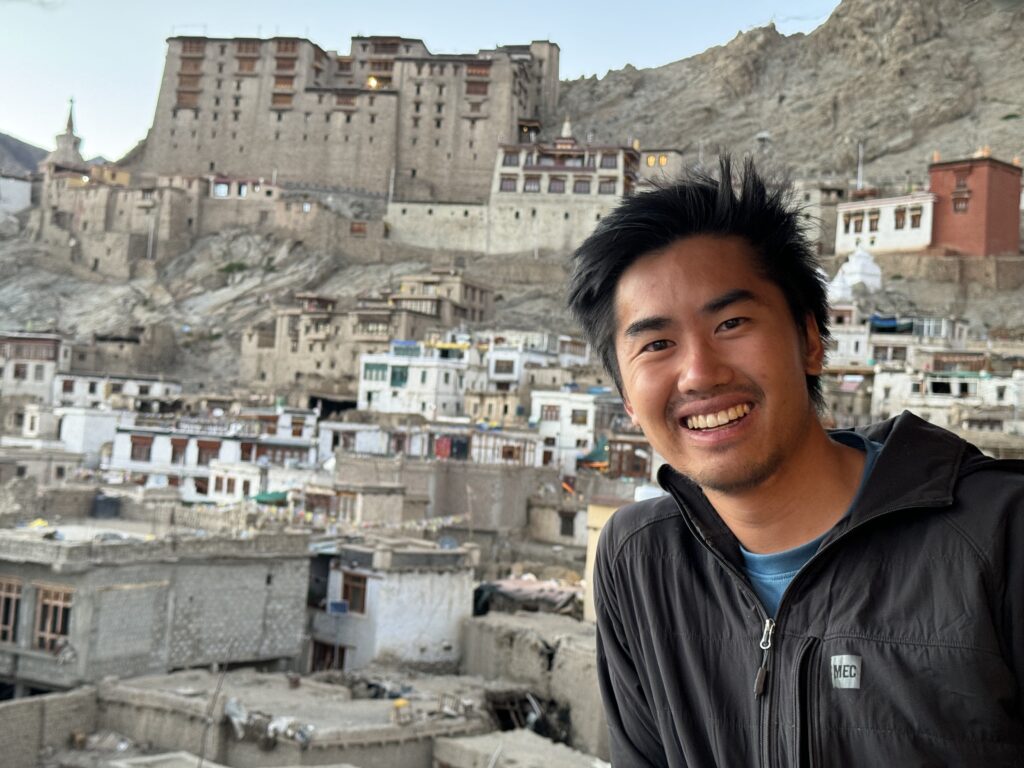
I capped off my 3-month solo adventure across Asia with an incredibly fast-paced 3 weeks in India. Knowing I had a comfortable home life in Vancouver to return to, and having just spent a week chilling in Almaty, Kazakhstan (you can read more about my KZ experience here), I was eager for chaos and novelty to end my trip. Peak travel bedlam is what I got.
True to its reputation, India can be overwhelming on all senses and a tough solo travel destination. Horns constantly blaring on litter-strewn roads, clearly unhappy stray cattle eating trash on street corners, hyper aggressive hawking by tuktuk drivers, heavily polluted air in highly crowded streets — all in scorching heat. This is much of what I experienced in India’s large cities. Here, I experienced more stressful moments than the previous 2+ months of travel combined. Consequently I didn’t find India to be the most enjoyable “type 1 fun” travel destination, such as what you are more likely to experience in Western Europe or Southeast Asia.
It would, however, be an overly simplistic and unsophisticated travel take to leave it at this; you cannot generalize a country of 1.4 billion people and the seventh-largest country in area.
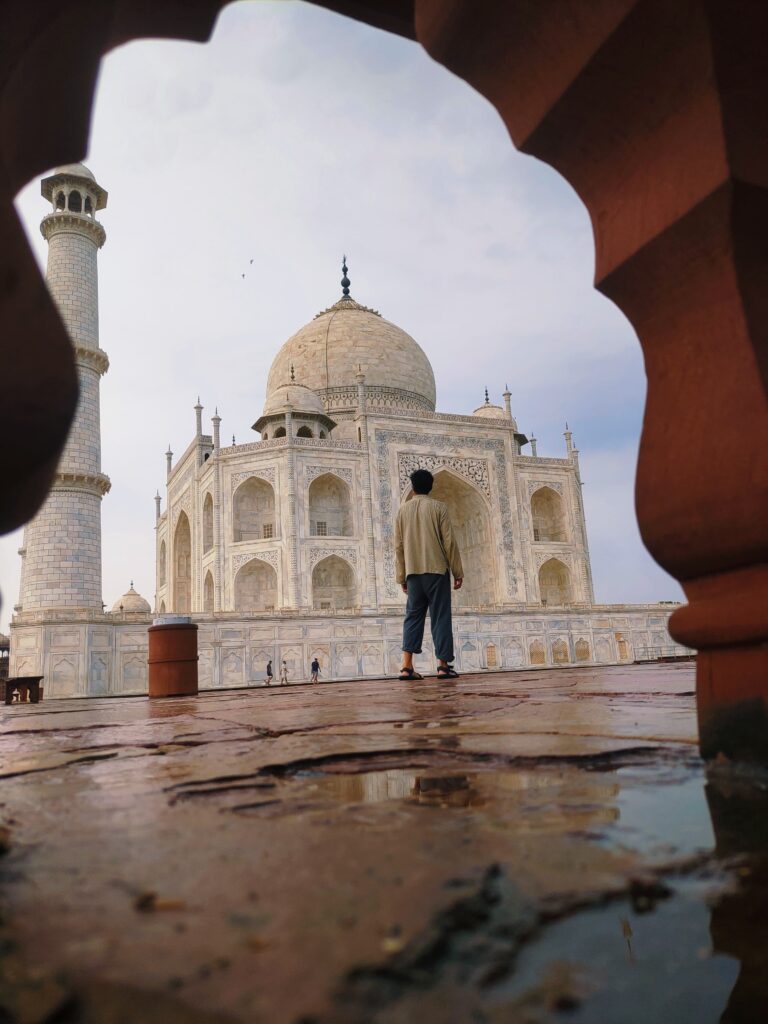
India is a country where my opinion of it changed with every place I went. It is a country with a cultural richness that I never experienced before, almost as if God, when designing India, increased a “cultural vibrancy” filter to 100. Indeed, India is a polarizing travel destination because of this intensity, so its helpful, perhaps necessary, to go in with an “intense flexibility” to match it.
When I look back at my India experience, I am reminded of the title of my favourite Coldplay song: “Life in Technicolor”. More than just noise and chaos, it’s most appropriate to think of visiting India as Travel in Colour. Like the bright, loud, and colourful paintings of Andy Warhol, travelling to India isn’t for everyone. What it offers, though, is an unmatched, distinct experience that leaves an unforgettable impression on everyone that visits. It is a country that can’t promise non-stop enjoyment but can promise adventure.
Below are 23 highlight musings, stories, and observations followed by a gallery of my favourite photos. I hope you enjoy the read and please comment below if you have any thoughts, questions or wanted to share about your own experience! I would love to hear.
23 Highlight Musings, Stories, and Observations
1 – India’s Polarity: “You either love travelling India or you hate it”. My decades of “field research” has revealed travellers of India fall into one of two camps: the love camp and hate camp. Some people thrive in it’s madness – travellers like my Japanese friend, Larry, who was having so much fun in Kolkatta, a major city, that he stayed for 2 weeks – and some people hate it so much they have come up with an amusing acronym for it: I‘d Never Do It Again. Which camp did I fall into? The short answer is I loved it as a travel adventure and I hated it as a vacation. Although there are points I questioned my decision to come here instead of relaxing in Indonesia or the Phillipines, I’m proud of my decision to solo travel here in hindsight and I can see myself visiting the South (Goa + Kerala) on a future trip. I don’t think you can get the same travel experience anywhere else in the world.
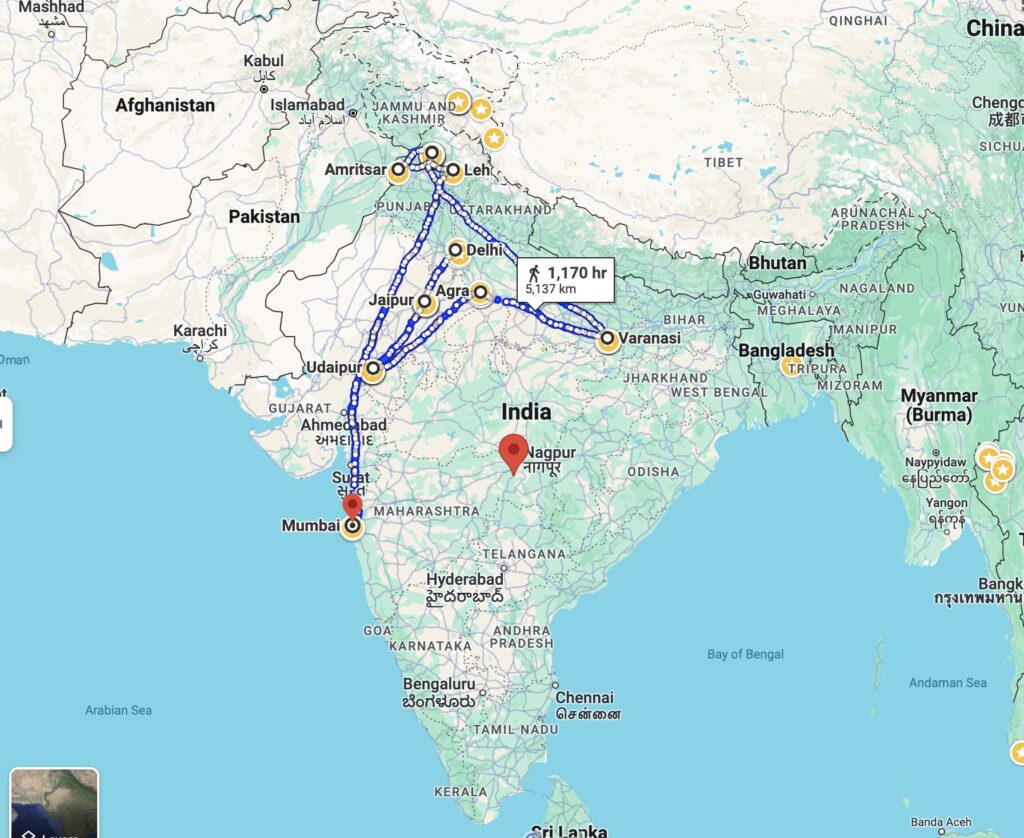
2 – But…the Nuance: India is Large (and the Dangers of Generalizing). India is massive! it’s important to recognize that someone’s opinion of India (i.e., whether they loved it or hated it) should be restricted to exactly the part of India that they actually experienced. India has 1.4 billion people spread across 28 states and 8 union territories, and each state has their own culture and unique travel offering and experience. This is reflected in each place having their own tagline or nickname; for example, Kerala in the south is nicknamed “God’s Own Country” due its beauty, Ladakh up north is known as “Little Tibet” due to it’s strong Tibetan culture, and the city of Varanasi is known as the “City of Death” due to it’s spiritual and religious associations. I think it’s important to emphasize this as generalizing can lead to negative stereotypes of a country and I think India is especially prone to this.
3 – My Itinerary: Fast Travel. Accordingly, my India experience and opinion should be confined to the 8 places I visited, which was mostly up North. I “fast travelled” or “full sent” India having visited 8 places in 23 days. I look at my trip as having two large parts: Part 1 was the ‘extended’ Golden Triangle (consisting of Delhi, Jaipur, Udaipur, Agra, and Varanasi – all populated cities) , and Part 2 was the more peaceful mountains regions in Northern India (consisting of Dharamshala and Leh). I also went to Amritsar (Punjab) and Mumbai as they made convenient stops before returning home.
4 – The Five Main Reasons I Travelled India. In no specific order. First, India is home to the Taj Mahal and it is a life bucket list item to visit all 7 New Wonders of the World. Second, I travel to see and experience how other parts of the world live and India forms nearly 20% of the world’s population. Third, I love rising to a challenge and India is known to be a tough travel destination. Fourth, I have many Indian friends and colleagues in Vancouver who have talked a lot about it. Lastly, because of India’s growing influence in Canada (due to to high immigration) and the world (see musings #5 and #6).
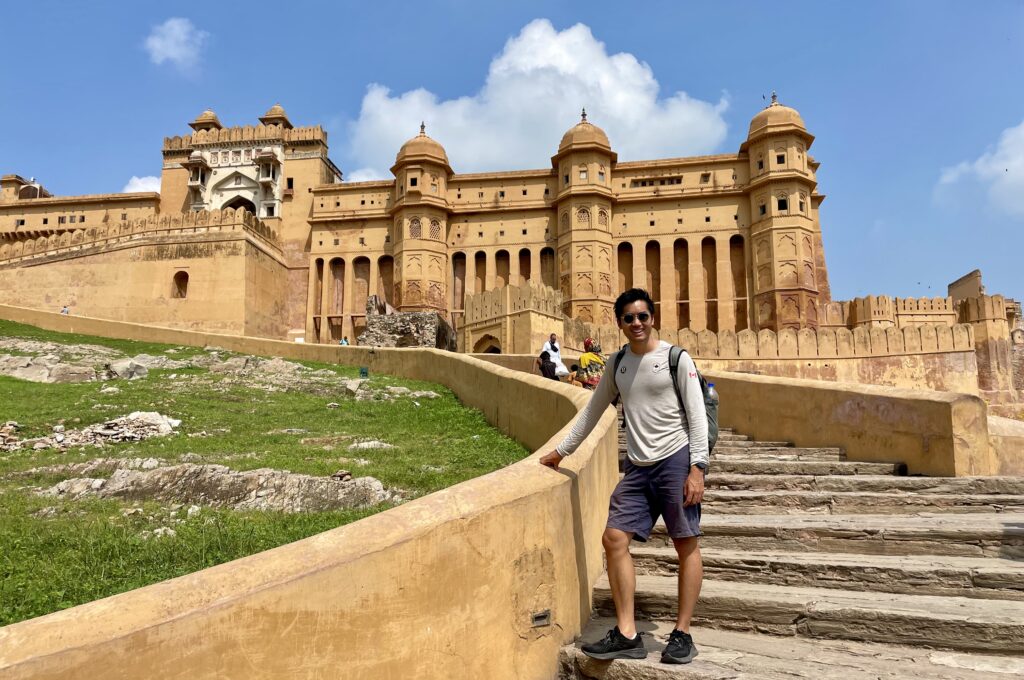
5 – Connecting with a Rapidly Growing Indian Population in Canada. Canada has a sizable Indian population that has grown rapidly and will continue to grow. According to 2021 census data, Indians formed 3.6% of the population and this has only increased materially over the last few years. Indians migrating to Canada has tripled since 2020 and India continues being the leading source country for new permanent residents in Canada, with more Indian citizens becoming Permanent Residents than the next 9 countries combined in 2024. Just as the Chinese population in Canada exploded in the 20th century, the Indian population is exploding now. Visiting India allows me to better connect with a growing community in my city and country.
6 – India’s Growing Global Influence. India is the world’s fifth-largest economy and on track to be #3 by 2027, behind US and China, with a growth rate higher than any large country. With it’s rising wealth, it would naturally carry more weight politically and in turn be a part of more news headlines. Since visiting countries “makes things personal” to me, travelling to India will motivate me more to stay more engaged in news involving India and thus more better informed on important issues.
7 – …and the Shrinking Importance of India’s Caste System. I have obviously heard about India’s problematic caste system in passing many times but never understood how relevant it is today in India. The caste system is a social hierarchy passed down in families that defines your occupation and whom you can marry. The TL/DR is that it is no longer that relevant: people by and large can do what they want legally but castist behaviour and prejudices still exists, just like racism in America. Interestingly, the only people who did mention (and they mentioned it many times in the course of a 20-minute conversation) were two older people of higher castes. In Udaipur, Rajasthan, I received a personal tour of the Jagdish Temple by someone of the “Brahmin” caste who proudly explained that managing and supervising this temple has been done by his family for generations, and a similar experienced happened in Varanasi. It’s not a coincidence that the people clinging to this system are those that benefitted from it.
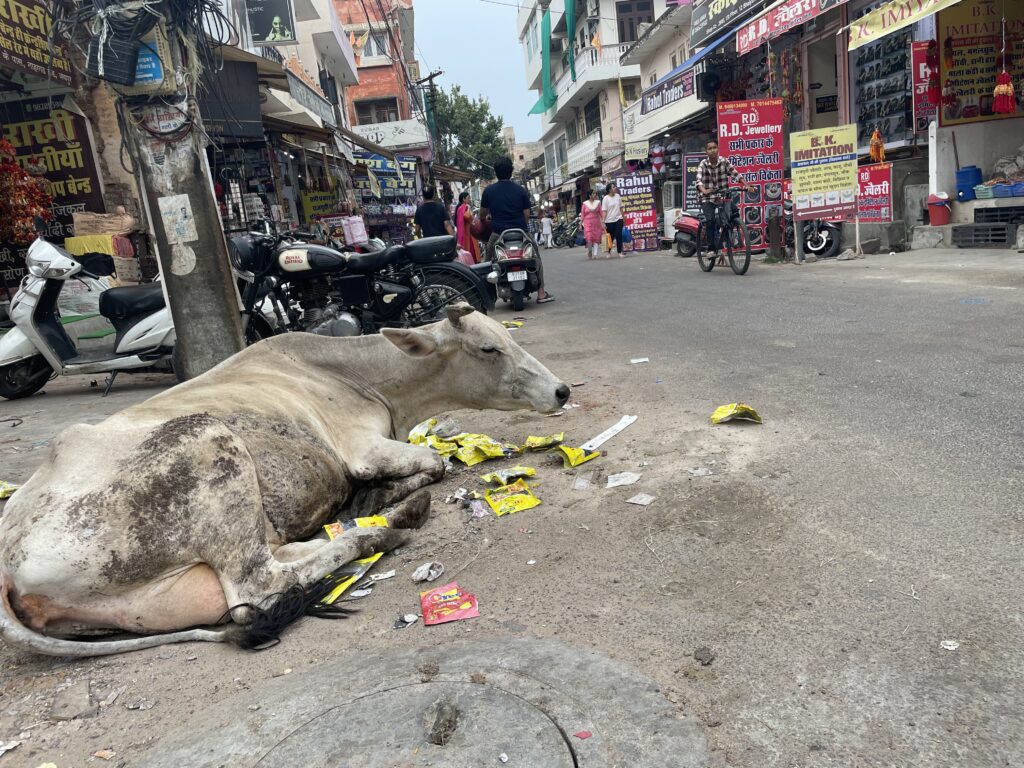
8 – Lack of “Millenial Flytrap” Cafes. In hopes of escaping big city noise, I found myself yearning for the comforts of modern “millenial flytrap” cafes more than I normally would, something I quickly discovered is an Indian rarity and I was seldom successful in my pursuit. I first heard the term “millenial flytrap” described to me by Lianna from my Mongolian Gobi Desert tour and I think it’s great. Lianna said its used to describe “basic” places catering to the preferences of young adults. Think something like a place with neon lights and signs that look great in Instagram photos, with grass and flowers on the wall, and overhead lighting in fancy shapes.
9 – …but not a lack of Street Cows roaming India’s streets, which saddens me. According to 2020 livestock census data, there is more than 5 million stray cattle in India, more than the population of US and Canada combined. AND this has increased recently due to tightening slaughter restrictions (resulting from successful campaigns by Hindu nationalist groups – a religion that considers cows sacred) and new technology, which has allowed farmers to need less cattle. Especially after seeing the freedom animals had in Mongolia’s Orkhon Valley, it upset me seeing so many cows eat trash off the street and numerous times I was in a car or tuktuk that had a close call with a cow entering the street.
10 – Hinduism and Colour. Since India is nearly 80% Hindu, Hinduism is inseparable from Indian culture and this, together with the fact India is only one of three Hindu-majority countries in the world (with the others being the tiny countries of Nepal and Mauritius), is a major reason why the Indian travel experience and culture is so unique. This integration is made obvious by the amount of colour one sees on the street. Colour plays an important role in Hinduism, with each colour signifying different qualities. For example, saffron (a golden yellow) is the most sacred colour and represents fire and renuncication and purity.
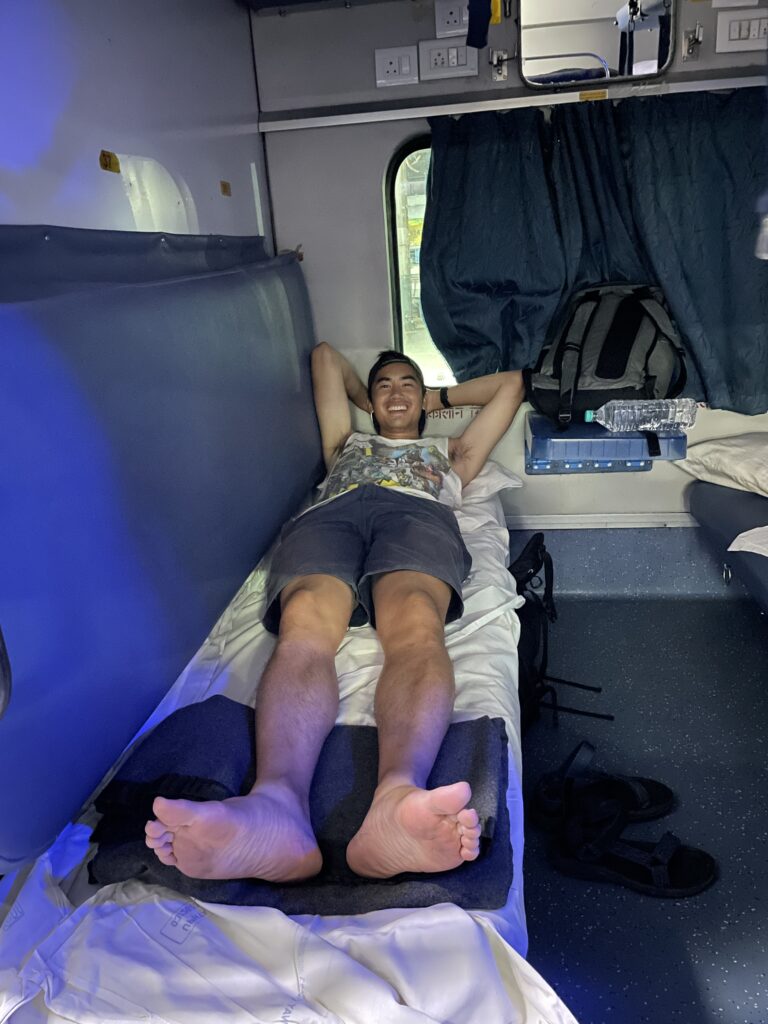
11 – My Evolving Travel Take on “Authentic Travel Experiences”. I think many people, including myself, have incorrectly used the word “authentic” to describe their travel experiences, specifically by using it to describe only experiences that conform to the idea they have in their head of what a place should be like. For example, someone whose visit to a city’s Chinatown includes eating at a restaurant run by a Chinese couple with their children taking their order up front may describe that as an “authentic” Chinatown experience, compared to a visit to Chinatown that features no interactions with Chinese people, which would be described by many as “inauthentic”. In actuality, “authentic” merely means “real” or “genuine” and whatever a place is at that point is authentically it, regardless of whether it conforms to the vision they had in their head. As another example, just because a place may be overly touristy now or no longer what it used to be like, doesn’t mean that place is no longer authentic – it just isn’t what it used to be like. Misusing a word isn’t the biggest deal, but whenever I see the word “authentic” used now in travel contexts, I try to sus out what the writer actually means.
12 – Commuting in India: A Sophisticated Train Network like Veins on a Leaf. Speaking of “authentic” travel experienes, prior to visiting India, my vision of commuting between cities in India was informed by the hit 2008 film, Slumdog Millionaire, which featured a scene of two boys sneaking on a dated crowded open-air train. Certainly these rustic-looking trains exist in India but so do modern, clean, air-conditioned ones. Many of my commutes between cities were on these modern trains, and not the “general class” trains. Does this make my experience any less authentic? No. I just commuted the way middle class Indians commuted! By the way, the train network in India is very extensive – like veins on a leaf – and once you get used to it, it becomes easy to get around between major cities.
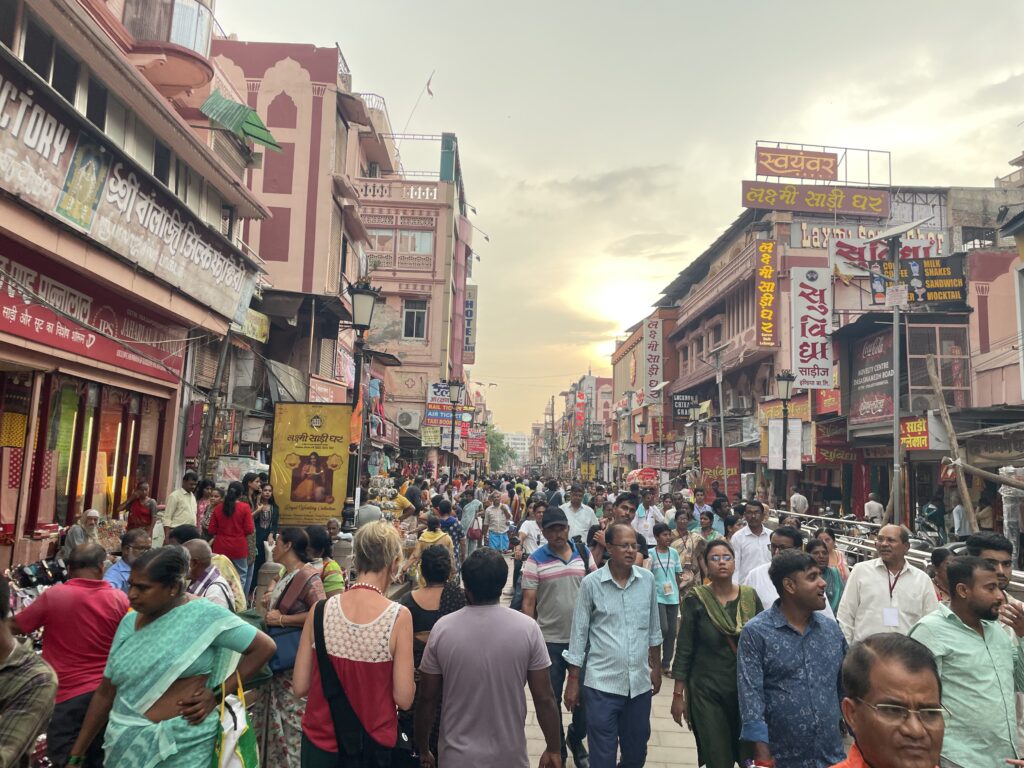
13 – Chinese Culture and Indian Culture: Importance on Academics. I found it interesting seeing large posters showcasing portraits of children and teenagers who excelled on exams plastered on the side of tuktuks and throughout city streets. There is clearly a strong emphasis on academic performance in Indian culture and it is something that is common with Chinese culture.
14 – A Failed Negotiaton: “What is your budget?”. In Udaipur, I purchased two bespoke suits, one button-up white shirt, and one wool overcoat (and shipping to Canada) for $600 CAD, which was too much! I knew I was overpaying at the time but didn’t realize until talking to some locals I met how much I overpaid. I probably could have got it all for $450. A pivotal part of the negotation process was when the vendor asked “what my budget was” and I responded truthfully. Coincidentally, the total amount he suggested was the amount in my budget… d’oh!
The remaining musings are top highlights from each of the destinations, in the order I went to them!

15 – The “Delhi Experience”: Mostly the Environment, not the People. Honestly I found Delhi to be the worst part of my experience in India, although I didn’t stay here long. Here, I experienced a heated argument with multiple tuktuk drivers. With one, after agreeing that he would drop me off at Starbucks 15 minutes away for 100 rupees ($1.50 CAD), he dropped me off at another cafe 3 minutes away and wanted the full amount, whereas I would only give him 50 rupees. In short, the conversation escalated and we both got out of the vehicles angry and shouting at each other (there was a huge language barrier) as I didn’t agree on principle what he was doing. In the end, I realized the dispute was over 50 rupees (like $0.80 CAD) and I gave it to them before telling him to bugger off. I have found aggressive hawking and attempts to cheat tourists is common in tuktuk drivers in Delhi and while I found it tempting to attribute these negative behaviours to the poor character of the people who perform them, it’s likely more accurate to attributed it to the environment they are in, where they feel they must do this to advance in life. While I think it’s admirable to aim for “our environments to be a product of us”, we are mostly products of our environment and it may be that Delhi’s environment forces or pressures people to act in certain ways, or else they get left behind.
16 – Jaipur, aka the “Pink City”, the most Instagrammable City in the World. I was happy to get out of Delhi and enter my first longer stop of my trip: Jaipur, the capital city of the state of Rajasthan, and one of the three cities of India’s “Golden Triangle” (the others being Agra and Delhi). Jaipur is also known as the Pink City due to pink being the dominant colour scheme of the buildings in its old city, which makes it a great spot for photography. The highlight here was definitely going to the beautiful Amber Fort, which featured the nicest Palace I’ve seen in India.
17 – Udaipur, the City on the Lakes. After Jaipur, I took a train to Udaipur, another city in Rajasthan famous for it’s lakes. I was happy to get to somewhere slightly more calm and tranquil and I took it easier here with much of my time spent chilling by lake-side cafes and restaurants. The highlight here was experiencing sunset by the lake on the ghats, which are essentially stairs that enter the water and historically used for bathing purposes. I found it to be one of those “real deal” travel moments, sitting there alone, people-watching, reflecting on my travel experiences. From here, I took a sleeper train to Agra for $20 CAD.
18 – Agra, the Home of the Taj Mahal, the most Feminine and Elegant Wonder of the World. Many people I talked to said Agra is one of those cities where it’s best to go in, see the Taj Mahal, and exit to your next destination — so that was what I did. I didn’t do anything here apart from seeing the Taj Mahal on the outside at sunset and at sunrise the next day. The Taj is the 4th Wonder of the World I saw (after the Roman Colliseum, Machu Pichu, and the Great Wall) and of the 4, it is the one with the most romantic story. I also found it also to be the most feminen and elegant with it’s baby smooth looking exterior and curves. They call the Taj a “Symbol of Love” since it was created in honour of an emperor’s dead wife (and it houses her), however it is interesting to note that this same emperor married again 4 additional times. How do you think these new wives felt?

19 – Varanasi, the Spiritual Capital – theres nothing like this place! Of all my travel experiences on this trip, my time is Varanasi will be one of the most memorable (other candidates being my time in Ladakh (below), and Mongolia). I’ve never experienced anything quite like what I experienced here. Varanasi is the spiritual capital of India and apparently one of the world’s oldest continuously inhabited cities with a history dating back over 3000 years. As the “spiritual capital” it is a pilgrimage desintation for Hindus. Here I experienced passion in the air, colour, chaos, narrow alleys, heat, noise, everything — but in a positive way. It is a city with a long row of ghats which makes for a nice walk in the day which flow by the sacred Ganges river. A highlight was seeing the “Aarti” religious ceremonies at sunset, which feature prayers, lamps, chanting, and music but the top highlight was getting an up close and personal tour of the 24/7 cremation activities.
20 – Dharamshala, Little Tibet and the Home of the Dalai Lama. After the chaos of the “extended” Golden Triangle, I was very happy to go up North to Tibetan India. Dharamshala is a small town in the state of Himachal Pradesh and most famous for hosting the Tibetan Government-in-exile. Here I went hiking, tried an introductory drop-in Meditation session, and went to Dalai Lama Temple, which is the current residence of him. Apparently he had a surgery so he was away but I still saw the temple and was surprised at how…modest and humble it was. No doubt it had a very peaceul atmosphere being in the misty mountains but it was a lot less spectacular than what I imagined.
21 – Amritsar, Punjab. Before heading to the Himalayas in Ladakh, I stopped in Amritsar, which is a major Punjab city. When I mention I am from Canada to Indians, one of the first things they mention is how Canada is home to so many Punjabis. It was here that I learned that Punjabis (those that commonly adhere to Sikh religion) form only 2% of India’s population compared to nearly 80% being Hindu, yet there are more Punjabis/Sikhs in Canada than Hindus. Locals attributed this to numerous reasons, with one relating this to how the Punjab region was the most affected by the Partition in India in 1947.
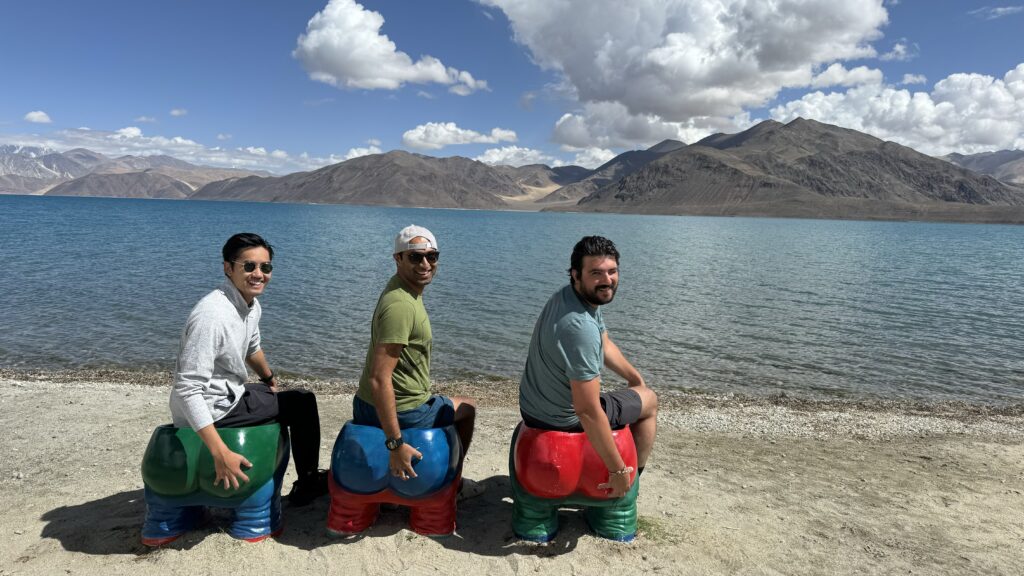
22 – Leh, Ladakh, and the Himalayas. This was another highlight of my 3-month trip almost singlehandedly due to how beautiful it is. Here I did a 4-day road trip through the highest motorable pass in the world and it’s difficult to describe how surreal it was so I will leave it to the photos in the gallery below.
23 – Mumbai. My last stop was 2 days spent in Mumbai (formerly Bombaby) and honestly I was pretty travel fatigued at this point and keen to fly home so I didn’t do much. Before my 4AM flight, I stayed at a theatre for 7 hours watching movies and I found it amusing that the national anthem is sung before each movie and they suddenly pause a movie mid-way for an intermission.
Photo Gallery
